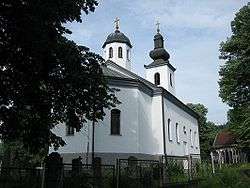Semberija

Semberija (Cyrillic: Семберија, pronounced [sɛ̌mbɛːrija]) is a geographical region in north-eastern Bosnia and Herzegovina. The main city in the region is Bijeljina. Semberija is located between the Drina and Sava rivers and Majevica mountain. Most of the region is situated in the entity of Republika Srpska, and the smaller part in the entity of Federation of Bosnia and Herzegovina. Semberija has a very rich history. It was first mentioned in 1533 during the Ottoman rule. The name Semberija is of Hungarian origin and probably related to the time of the 12th-16th centuries when this area was occasionally held by the Hungarian Kingdom. Today about 200,000 people live in the area of Semberija, most in the municipality of Bijeljina.
Municipalities
Municipalities in the region of Semberija:
Culture
The Tavna Monastery is located in the southern part of the Bijeljina municipality. The date of foundation is hidden somewhere in the shadows of the far past. The chronicles of monasteries Tronosha and Pech say it was built by Dragutin's sons Vladislav and Urosic. Stefan Dragutin was the King of Serbia from 1276 to 1282 and king of Srem from 1282 to 1316. The present church of Tavna Monastery was built in the same place as the original one. The Tavna Monastery is older than the other monasteries in the region such as Ozrena, Liplja, Vozuce and Gostovica. Tavna was damaged in the first years of Turkish rule, but was restored by the people. This was not the only time the monastery was damaged. It was damaged many times during the Turkish period and also during World War Two. Between 1941 and 1945 Tavna was bombed by the Ustase. On one of the gravestones it says "Zdravko Jovacnovic Killed 1943 by the Ustasa Blue Division protecting and defending the monastery". After World War II Tavna was rebuilt.
Gallery
- Bijeljina University
 Church in Lopare
Church in Lopare High School in Ugljevik
High School in Ugljevik Church in Ugljevik
Church in Ugljevik- National Library in Bijeljina
External links
Coordinates: 44°48′03″N 19°12′49″E / 44.80083°N 19.21361°E
